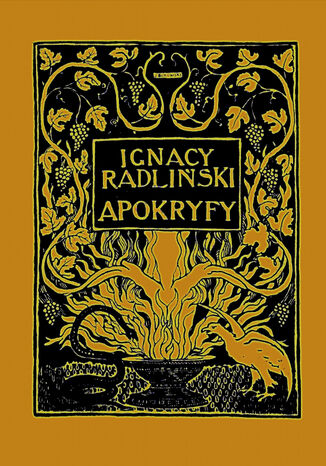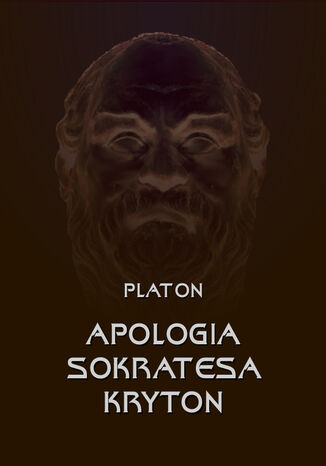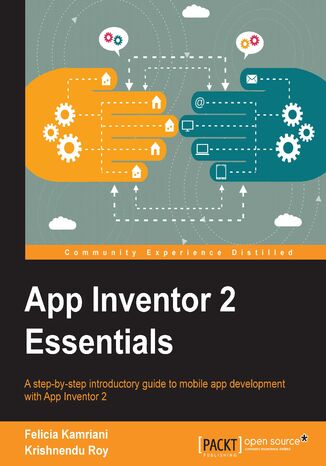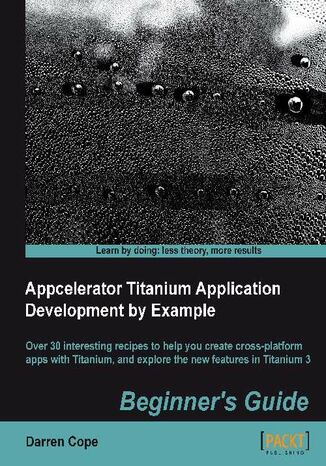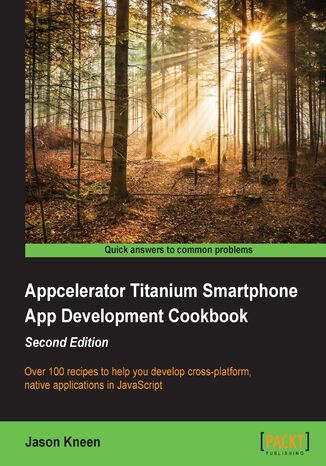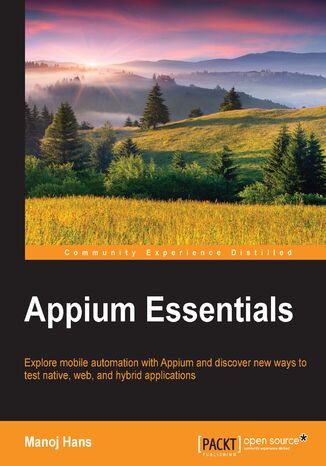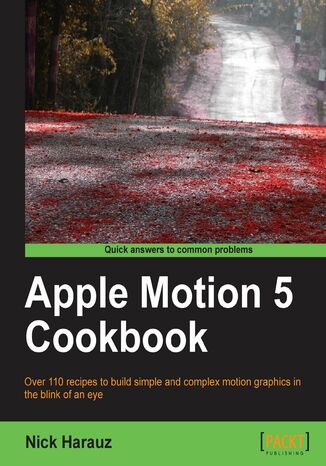Kategorien
E-Books
-
Wirtschaft
- Bitcoin
- Geschäftsfrau
- Coaching
- Controlling
- E-Business
- Ökonomie
- Finanzen
- Börse und Investitionen
- Persönliche Kompetenzen
- Computer im Büro
- Kommunikation und Verhandlungen
- Kleines Unternehmen
- Marketing
- Motivation
- Multimedia-Training
- Immobilien
- Überzeugung und NLP
- Steuern
- Sozialpolitik
- Handbȕcher
- Präsentationen
- Führung
- Public Relation
- Berichte, Analysen
- Geheimnis
- Social Media
- Verkauf
- Start-up
- Ihre Karriere
- Management
- Projektmanagement
- Personal (HR)
-
Für Kinder
-
Für Jugendliche
-
Bildung
-
Enzyklopädien, Wörterbücher
-
E-Presse
- Architektura i wnętrza
- Sicherheit und Gesundheit am Arbeitsplatz
- Biznes i Ekonomia
- Haus und Garten
- E-Business
- Ekonomia i finanse
- Esoterik
- Finanzen
- Persönliche Finanzen
- Unternehmen
- Fotografie
- Informatik
- HR und Gehaltsabrechnung
- Frauen
- Computer, Excel
- Buchhaltung
- Kultur und Literatur
- Wissenschaftlich und akademisch
- Umweltschutz
- meinungsbildend
- Bildung
- Steuern
- Reisen
- Psychologie
- Religion
- Landwirtschaft
- Buch- und Pressemarkt
- Transport und Spedition
- Gesundheit und Schönheit
-
Geschichte
-
Informatik
- Office-Programme
- Datenbank
- Bioinformatik
- IT Branche
- CAD/CAM
- Digital Lifestyle
- DTP
- Elektronik
- Digitale Fotografie
- Computergrafik
- Spiele
- Hacking
- Hardware
- IT w ekonomii
- Wissenschaftliche Pakete
- Schulbücher
- Computergrundlagen
- Programmierung
- Mobile-Programmierung
- Internet-Server
- Computernetzwerke
- Start-up
- Betriebssysteme
- Künstliche Inteligenz
- Technik für Kinder
- Webmaster
-
Andere
-
Fremdsprachen lernen
-
Kultur und Kunst
-
Lektüre
-
Literatur
- Anthologien
- Ballade
- Biografien und Autobiografien
- Für Erwachsene
- Drama
- Tagebücher, Memoiren, Briefe
- Epos
- Essay
- Science Fiction
- Felietonys
- Fiktion
- Humor, Satire
- Andere
- Klassisch
- Krimi
- Sachbücher
- Belletristik
- Mity i legendy
- Nobelpreisträger
- Kurzgeschichten
- Gesellschaftlich
- Okultyzm i magia
- Erzählung
- Erinnerungen
- Reisen
- Gedicht
- Poesie
- Politik
- Populärwissenschaftlich
- Roman
- Historischer Roman
- Prosa
- Abenteuer
- Journalismus
- Reportage
- Romans i literatura obyczajowa
- Sensation
- Thriller, Horror
- Interviews und Erinnerungen
-
Naturwissenschaften
-
Sozialwissenschaften
-
Schulbücher
-
Populärwissenschaft und akademisch
- Archäologie
- Bibliotekoznawstwo
- Filmwissenschaft
- Philologie
- Polnische Philologie
- Philosophie
- Finanse i bankowość
- Erdkunde
- Wirtschaft
- Handel. Weltwirtschaft
- Geschichte und Archäologie
- Kunst- und Architekturgeschichte
- Kulturwissenschaft
- Linguistik
- Literaturwissenschaft
- Logistik
- Mathematik
- Medizin
- Geisteswissenschaften
- Pädagogik
- Lehrmittel
- Populärwissenschaftlich
- Andere
- Psychologie
- Soziologie
- Theatrologie
- Teologie
- Theorien und Wirtschaftswissenschaften
- Transport i spedycja
- Sportunterricht
- Zarządzanie i marketing
-
Handbȕcher
-
Spielanleitungen
-
Professioneller und fachkundige Leitfaden
-
Jura
- Sicherheit und Gesundheit am Arbeitsplatz
- Geschichte
- Verkehrsregeln. Führerschein
- Rechtswissenschaften
- Gesundheitswesen
- Allgemeines. Wissenskompendium
- akademische Bücher
- Andere
- Bau- und Wohnungsrecht
- Zivilrecht
- Finanzrecht
- Wirtschaftsrecht
- Wirtschafts- und Handelsrecht
- Strafrecht
- Strafrecht. Kriminelle Taten. Kriminologie
- Internationales Recht
- Internationales und ausländisches Recht
- Gesundheitsschutzgesetz
- Bildungsrecht
- Steuerrecht
- Arbeits- und Sozialversicherungsrecht
- Öffentliches, Verfassungs- und Verwaltungsrecht
- Familien- und Vormundschaftsrecht
- Agrarrecht
- Sozialrecht, Arbeitsrecht
- EU-Recht
- Industrie
- Agrar- und Umweltschutz
- Wörterbücher und Enzyklopädien
- Öffentliche Auftragsvergabe
- Management
-
Führer und Reisen
- Afrika
- Alben
- Südamerika
- Mittel- und Nordamerika
- Australien, Neuseeland, Ozeanien
- Österreich
- Asien
- Balkan
- Naher Osten
- Bulgarien
- China
- Kroatien
- Tschechische Republik
- Dänemark
- Ägypten
- Estland
- Europa
- Frankreich
- Berge
- Griechenland
- Spanien
- Niederlande
- Island
- Litauen
- Lettland
- Mapy, Plany miast, Atlasy
- Miniführer
- Deutschland
- Norwegen
- Aktive Reisen
- Polen
- Portugal
- Andere
- Przewodniki po hotelach i restauracjach
- Russland
- Rumänien
- Slowakei
- Slowenien
- Schweiz
- Schweden
- Welt
- Türkei
- Ukraine
- Ungarn
- Großbritannien
- Italien
-
Psychologie
- Lebensphilosophien
- Kompetencje psychospołeczne
- zwischenmenschliche Kommunikation
- Mindfulness
- Allgemeines
- Überzeugung und NLP
- Akademische Psychologie
- Psychologie von Seele und Geist
- Arbeitspsychologie
- Relacje i związki
- Elternschafts- und Kinderpsychologie
- Problemlösung
- Intellektuelle Entwicklung
- Geheimnis
- Sexualität
- Verführung
- Aussehen ind Image
- Lebensphilosophien
-
Religion
-
Sport, Fitness, Diäten
-
Technik und Mechanik
Hörbücher
-
Wirtschaft
- Bitcoin
- Geschäftsfrau
- Coaching
- Controlling
- E-Business
- Ökonomie
- Finanzen
- Börse und Investitionen
- Persönliche Kompetenzen
- Kommunikation und Verhandlungen
- Kleines Unternehmen
- Marketing
- Motivation
- Immobilien
- Überzeugung und NLP
- Steuern
- Sozialpolitik
- Handbȕcher
- Präsentationen
- Führung
- Public Relation
- Geheimnis
- Social Media
- Verkauf
- Start-up
- Ihre Karriere
- Management
- Projektmanagement
- Personal (HR)
-
Für Kinder
-
Für Jugendliche
-
Bildung
-
Enzyklopädien, Wörterbücher
-
E-Presse
-
Geschichte
-
Informatik
-
Andere
-
Fremdsprachen lernen
-
Kultur und Kunst
-
Lektüre
-
Literatur
- Anthologien
- Ballade
- Biografien und Autobiografien
- Für Erwachsene
- Drama
- Tagebücher, Memoiren, Briefe
- Epos
- Essay
- Science Fiction
- Felietonys
- Fiktion
- Humor, Satire
- Andere
- Klassisch
- Krimi
- Sachbücher
- Belletristik
- Mity i legendy
- Nobelpreisträger
- Kurzgeschichten
- Gesellschaftlich
- Okultyzm i magia
- Erzählung
- Erinnerungen
- Reisen
- Poesie
- Politik
- Populärwissenschaftlich
- Roman
- Historischer Roman
- Prosa
- Abenteuer
- Journalismus
- Reportage
- Romans i literatura obyczajowa
- Sensation
- Thriller, Horror
- Interviews und Erinnerungen
-
Naturwissenschaften
-
Sozialwissenschaften
-
Populärwissenschaft und akademisch
- Archäologie
- Philosophie
- Wirtschaft
- Handel. Weltwirtschaft
- Geschichte und Archäologie
- Kunst- und Architekturgeschichte
- Kulturwissenschaft
- Literaturwissenschaft
- Mathematik
- Medizin
- Geisteswissenschaften
- Pädagogik
- Lehrmittel
- Populärwissenschaftlich
- Andere
- Psychologie
- Soziologie
- Teologie
- Zarządzanie i marketing
-
Handbȕcher
-
Professioneller und fachkundige Leitfaden
-
Jura
-
Führer und Reisen
-
Psychologie
- Lebensphilosophien
- zwischenmenschliche Kommunikation
- Mindfulness
- Allgemeines
- Überzeugung und NLP
- Akademische Psychologie
- Psychologie von Seele und Geist
- Arbeitspsychologie
- Relacje i związki
- Elternschafts- und Kinderpsychologie
- Problemlösung
- Intellektuelle Entwicklung
- Geheimnis
- Sexualität
- Verführung
- Aussehen ind Image
- Lebensphilosophien
-
Religion
-
Sport, Fitness, Diäten
-
Technik und Mechanik
Videokurse
-
Datenbank
-
Big Data
-
Biznes, ekonomia i marketing
-
Cybersicherheit
-
Data Science
-
DevOps
-
Für Kinder
-
Elektronik
-
Grafik / Video / CAX
-
Spiele
-
Microsoft Office
-
Entwicklungstools
-
Programmierung
-
Persönliche Entwicklung
-
Computernetzwerke
-
Betriebssysteme
-
Softwaretest
-
Mobile Geräte
-
UX/UI
-
Web development
-
Management
Podcasts
Apokalipsa pełna jest tajemniczych opisów, które mogą budzić obawy, a chwilami nawet przerażać. Jednak autorka książki traktuje ostatnią księgę Pisma Świętego bez uprzedzeń i bez paniki. Z jej łagodnie poetyckiej, ale zarazem konkretnej opowieści bije spokój osoby głęboko zakorzenionej w Bogu. Swobodnie przechodzi od symbolu do symbolu, nie pomijając żadnych szczegółów. Próbuje je odczytać i zrozumieć z perspektywy człowieka XXI wieku. Jestem głęboko przekonana, że wieść ukryta w Apokalipsie, jest wieścią możliwą i przeznaczoną do odczytania. Bóg nie bawi się tu z nami w grę jakby z harcerskiego biwaku, gdzie zadaniem Jednej Strony jest jak najszczelniej zaszyfrować hasło, a drugiej mimo wszystko jakoś się do niego dobrać. () Gdy działanie Boga wydaje się nam dziwne, to zawsze w końcu kluczem do niego okazuje się miłość (fragment książki)
Apokalipsa przypomina nam, że naszą ostateczną nadzieją nie jest po prostu śmierć i pójście do nieba, lecz ujrzenie powrotu naszego Pana w chwale, zmartwychwstanie oraz zaślubiny nieba i ziemi, kiedy Nowe Jeruzalem zstąpi jak oblubienica. Naszym przeznaczeniem, jako uczniów Jezusa, jest uczta weselna Baranka w wiecznym mieście, którego nie sposób opisać i w którym ujrzymy Boga twarzą w twarz. (fragment książki)
Jest to powieść satyryczna o zabarwieniu humorystycznym, przekornie i swobodnie parafrazująca Apokalipsę św. Jana. Do Łęczycy przyjeżdża dziennikarz, aby zdać relację z I Przeglądu Piosenki Turystycznej „Nocnik” (2005 r.), ale odwiedza go diabeł Boruta i od tego faktu sprawy toczą się w zupełnie nieprzewidzianych kierunkach, w których rzeczywistość miesza się ze światem magicznym. Finalną kulminacją są niebiańskie zaślubiny w mieście Swedenborga oraz awantura w redakcji.
Klasyka literatury postapokaliptycznej! Diaboliczna intryga, zabójcze tchnienie radiacji, idealna lektura dla fanów serialu i gier Fallout. W pożodze nuklearnego piekła ginie znana nam cywilizacja. W świecie pełnym śmierci, gruzów, radioaktywnego skażenia i chorób nieliczni ocaleni walczą o przeżycie, tworząc nowe społeczności. Jednym z nich jest niepodzielny władca wyludnionego i obróconego w zgliszcza Wolnego Miasta Wrocławia charyzmatyczny Pan Jan, zwany także Burmistrzem. Jego twarde rządy dają nadzieję na przyszłość, a największą ambicją jest stworzenie nowej, rozciągającej się od morza do morza, Rzeczypospolitej.
Muzyczne osiągnięcia Alexa przybliżają go do spełnienia swoich największych marzeń. Światowa kariera zdaje się być na wyciągnięcie ręki. Co innego dzieje się w życiu prywatnym. Jego małżeństwo z Sofią wisi na włosku i chyba nic nie jest w stanie go uratować. Brat Alexa, Juliusz także zmaga się z problemami. Niegdyś uznawany za geniusza w świecie reklamy, obecnie czuje się wypalony i wciąż nie może poradzić sobie z przeszłością. Na tle warszawskiej pogoni za pieniędzmi i konsumpcyjnego szaleństwa trójka bohaterów zmienia porządek łączących ich relacji. Czym jest miłość i czy można dla niej złamać wszystkie zasady?
Koniec lat 80. Frencz, absolwent studiów ekonomicznych, wraca do rodzinnego miasteczka. Tam zatrudnia się w archiwum zakładów chemicznych. Nie ma wielkich ambicji na życie. Zamierza spokojnie dożyć do emerytury bez zmian zawodowych. Tymczasem rzeczywistość całkowicie niszczy jego plany. Na skutek transformacji ustrojowej z 1989 roku Frencz traci pracę. Problemy w życiu rodzinnym pogłębiają złe samopoczucie. Ojciec umiera, a matka stara się odnaleźć w nowym kapitalistycznym świecie. Nawet narodziny potomka nie pomagają Frenczowi w stanięciu na nogi. Powoli zaczyna kroczyć ścieżką, którą przed laty obrał jego ojciec. To przejmująca opowieść o ludziach, dla których rok 1989 nie był momentem, który zmienił ich życie na lepsze. Frencz symbolizuje tych, dla których był to początek apokalipsy.
Apokryficzność i ekfrastyczność jako komplementarne poetyki intertekstualne
We wszystkich przywołanych w książce tekstach da się zaobserwował podstawową łączącą je kwestię (można ją dostrzec także w innych utworach mierzących się z kanonem): każdy z nich dotyczy szeroko pojmowanej utraty "niewinnego spojrzenia" na wizualne pre-teksty, sposoby myślenia, których są wytworami, kanoniczne interpretacje, a także na idealizowanie i fetyszyzowanie samych obrazów, ich twórców oraz bohaterów. Apokryficzne prze-pisywanie dzieł sztuki - co jedynie pozornie oczywiste - ułatwia postrzeganie ich jako przedmiotów nie tylko estetycznych, ale także (a może nawet przede wszystkim) jako przedmiotów nacechowanych etycznie. Z Zakończenia
Apokryfy judaistyczno-chrześcijańskie
Ze wstępu: We dwóch czy trzech stuleciach, kończących erę starożytną, i w kilku, rozpoczynających nową, w całym, rzec można, owoczesnym świecie dziejowym, powstawał i rozpowszechniał się pewien rodzaj utworów, ważnych zarówno dla swej treści, jak i pochodzenia. Treść jak wszystkich celniejszych pomników piśmiennych w dziejach powszechnych, była ściśle związaną z biegiem wypadków wytwarzających te dzieje, przedstawiała, grupowała i objaśniała fakty rzeczywiste, lub za rzeczywiste uchodzące i podawane; wyprowadzała z rozbieranych faktów wnioski, wyrabiała o tych faktach, z danego punktu widzenia, pojęcia właściwe, zaprawiała na nich mniej przygotowane umysły do wydania stosownego do danych celów sądu o rzeczy. Pochodzenie było zawsze ukryte, zagadkowe, tajemnicze. Właśnie, wskutek takiego pochodzenia, dla tych utworów powstała z greckiego języka nazwa apokryfy, pod którą, w piśmiennictwie powszechnym, są one wyłącznie znane.
Apologetyka po prostu. Jak pomóc poszukującym i sceptykom w odnalezieniu wiary
Objawienie jest niezmienne, ponieważ odsłania wieczne prawdy dotyczące natury człowieka, wszechświata, a nade wszystko Boga. Zmienia się jednak kontekst intelektualny, społeczny i kulturowy, w którym rozbrzmiewa Słowo Boga. Dlatego dla zrozumienia i głoszenia prawdy chrześcijańskiej istnieje potrzeba wyrażania jej na nowo, nadając niezmiennej istocie współczesną formę. Niniejsza seria jest zbiorem książek kompetentnie prezentujących właściwe rozumienie i uzasadnienie wiary. Powstaje ona z myślą o każdym, kto chce poznać racjonalnie argumenty za prawdziwością objawienia. Serię opracowują: Wydawnictwo W drodze, które od 1973 roku wydaje publikacje, pomagając łączyć wiarę z codziennością. Fundacja Prodoteo, której misją jest propagowanie stylu życia opartego na wartościach chrześcijańskich, m.in. poprzez popularyzację wiedzy z zakresu apologetyki chrześcijańskiej i znajomości Pisma Świętego. Alister McGrath uważa, że najlepszą taktyką obronną wiary chrześcijańskiej jest jej objaśnianie. Historia obfituje w wielkich i przekonujących apologetów. Jednak wyzwania, jakie stawia współczesny świat i jego ideologie z nowym ateizmem na czele, wymagają świeżego i elastycznego podejścia do apologetyki. Nawiązując do słynnej książki C.S. Lewisa Chrześcijaństwo po prostu, McGrath uczy czytelnika metod dzielenia się wiarą przemawiających nie tylko do umysłu, lecz także do serca i wyobraźni.
Apologetyka Radości. C. S. Lewisa argument z Pragnienia na rzecz istnienia Boga
Wszystkie kultury na przestrzeni dziejów cechowała tendencja, by szukać czegoś, co wykracza poza widzialny, materialny świat. Według C.S. Lewisa wszyscy posiadamy pragnienie transcendencji, którego nasza rzeczywistość nigdy nie zaspokoi. Skąd bierze się w człowieku taka tęsknota i co ona oznacza? Choć Lewis nigdy nie użył zwrotu "argument z Pragnienia", to argument ten wypełnia strony wielu jego cenionych prac. W swej pasjonującej książce Joe Puckett Jr. analizuje i rozszerza rozumowanie Lewisa. Mierzy się także z krytykami religii, takimi jak Nietzsche, Freud, ale też Dawkins i inni współcześni myśliciele, którzy postrzegają Boga jedynie jako projekcję ludzkiej potrzeby bezpieczeństwa lub uznają pragnienie transcendencji za wyłącznie wytwór czysto naturalnych przyczyn. Opierając się na argumentacji Lewisa, Puckett dowodzi, że wiara w coś poza tym światem, co jest źródłem i wypełnieniem naszej tęsknoty, jest racjonalna. Według Lewisa to właśnie poszukiwanie obiektu Radości może doprowadzić nas do Boga. Mamy to do czynienia z wyjątkowym opracowaniem akademickim, jedyną znaną mi książką w pełni poświęconą najbardziej interesującemu argumentowi na świecie. Napisana jest w sposób jasny i przekonujący. Polecam ją całym sercem. - Peter Kreeft, autor książki "Krytyka relatywizmu moralnego. Wywiad z pewnym absolutystą" Joe Puckett w "Apologetyce Radości" pokazuje długą i bogatą historię namysłu nad problemem wiary oraz istnienia Boga. Najwyraźniej jest to problem przypisany do naszej ludzkiej kondycji, dlatego książka ta jest dla nas i o nas. Jest ona dla nas, ponieważ zaprasza, by we własnym życiu uczciwie i odważnie poszukać doświadczeń, w których przebłyskuje pragnienie transcendencji. Nic nie gwarantuje, że je znajdziemy, ale nie znajdziemy go na pewno, jeśli nie spróbujemy. Jest też i o nas. Przedstawia przemiany kultury, choćby oddzielenie faktów i wartości, nauki od religii, piękna od prawdy i dobra, które sprawiają, że trudniej nam pragnienie transcendencji w sobie identyfikować i dostrzegać w świecie jej "echa". - dr hab. Agnieszka Lekka-Kowalik, prof. KUL Spośród różnych argumentów na istnienie Boga, które pojawiły się na przestrzeni dziejów, najbardziej zaniedbanym i najmniej znanym jest argument z ludzkich pragnień [...]. Puckett przedstawia istotne składniki tego argumentu, odwołując się do głównych jego propagatorów oraz krytyków. Czyni to z żarliwością i biegłością, co korzystnie wpływa na ponowne przedstawienie w naszych czasach tego ważnego argumentu na istnienie Boga. - Michael R. Young redaktor "The Journal of Faith and the Academy" C.S. Lewis [...] przekonuje, że najlepsze wyjaśnienie ludzkiego doświadczenia radości i współwystępującego z nim uczucia tęsknoty za tym, co transcendentne i wieczne, znajdziemy w judeo-chrześcijańskiej wizji rzeczywistości [...]. Jak dotąd ten interesujący argument Lewisa był pomijany przez apologetów starających się wykazać prawdziwość teizmu chrześcijańskiego. Uważam jednak, że argument z Pragnienia zajmuje należne mu miejsce w całościowej argumentacji na rzecz teizmu i jestem szczęśliwy, że "Apologetyka Radości"Joego Pucketta wypełnia tę lukę, prezentując ten argument oraz odpowiadając jego krytykom. "Apologetyka Radości", o ile wiem, jest pierwszym książkowym opracowaniem tego argumentu Lewisa i jestem szczęśliwy, że mogę polecić tę lekturę. - Mark Linville autor w "The Blackwell Companion to Natural Theology" i współredaktor oraz współautor pracy zbiorowej "Philosophy and the Christian Worldview" Joe Puckett Jr. pełni posługę lektora w 16th Ave. Church of Christ w Sterling, Illinois. Jest absolwentem Faulkner University. Obecnie na Wydziale Nauk Humanistycznych w Salve Regina University pracuje nad doktoratem poświęconym filozofii umysłu. C. S. Lewis. Rozum i Wiara "Wierzę w chrześcijaństwo tak samo jak we wschodzące słońce - nie tylko dlatego, że je widzę, ale także dlatego, iż dzięki niemu widzę wszystko inne." (C.S. Lewis) Seria wydawnicza "C. S. Lewis. Rozum i Wiara" to zbiór publikacji dotyczących twórczości i życia Clive'a Staplesa Lewisa, uznawanego za największego współczesnego chrześcijańskiego apologetę. Prezentuje intelektualne walory teizmu oraz argumentację na rzecz tezy o racjonalności przekonań teistycznych, a w szczególności chrześcijaństwa. Choć Lewis zmarł w roku 1963, jego twórczość jest wciąż aktualna. Do jego argumentów i analiz dotyczących moralności oraz społeczeństwa wciąż odwołują się zawodowi filozofowie i teologowie, a także liczni przedstawiciele obu stron filozoficzno-teologicznego sporu ateizmu z teizmem. Na język polski zostało już przełożone wiele prac C.S. Lewisa, które cieszą się niesłabnącą popularnością. Wciąż jednak brakuje opracowań biograficznych i krytycznych oraz pogłębionych analiz jego poglądów. Seria "C. S. Lewis. Rozum i Wiara" ma wypełnić tę lukę. Publikowane w niej teksty odznaczają się naukową wnikliwością, a jednocześnie są przystępne dla szerokiego grona czytelników, tak jak twórczość samego C.S. Lewisa, który przekonywał, że dzięki chrześcijaństwu wszystko inne nabiera sensu.
Czy chrześcijanie potrzebują dzisiaj apologii? Amerykański biskup, filozof i teolog, Robert Barron wskazuje na pilną potrzebę obrony chrześcijaństwa. Chodzi o stworzenie przekonującej apologetyki dla podstawowej narracji wiary. Takiego zadania podjął się ks. Przemysław Artemiuk.
Dzieło nie jest traktatem filozoficznym w zwykłym rozumieniu tego słowa, czy nawet w tym znaczeniu, w jakim traktatami filozoficznymi są inne dialogi Platona (np. Uczta). Ani sam Sokrates, ani Platon ustami Sokratesa nie roztrząsają tu żadnych szczegółowych kwestii ontologicznych lub kosmologicznych, które zaprzątały wtedy uwagę greckich filozofów. W argumentacji Sokratesa (zwłaszcza w jego rozmowie z Meletosem) można nawet dopatrzyć się błędów logicznych. Sokrates np. niesłusznie twierdzi, że nikt nie może świadomie dążyć do deprawowania innej osoby, ponieważ ta w końcu zwróciłaby się przeciwko niemu. I w historii starożytnej i współcześnie można łatwo znaleźć przykłady osób, które zdeprawowane szkodziły nie osobie odpowiedzialnej za jej zepsucie moralne, lecz innym. Sokrates tylko pozornie zbija również drugi punkt oskarżenia, twierdząc, że nie można go oskarżać jednocześnie o bezbożność i wprowadzanie nowych duchów. W rzeczywistości Anytos, Meletos i Lykon nie oskarżali go o ateizm, lecz o to, że nie uznaje bogów, których państwo uznaje, czyli religii państwowej. Była to niewątpliwie prawda. Jak powiedziano, religijność Sokratesa była bardzo głęboka, ale też całkiem innej ogólniejszej i bardziej refleksyjnej natury, niż u zwykłych Ateńczyków. Jest też prawdą, że Sokrates nie był zwolennikiem ustroju demokratycznego. Nie mógł zgodzić się z branym w Atenach za pewnik przekonaniem, że obywatele w swojej większości reprezentują mądrość. (za Wikipedią).
Aporie sobości. Problem tożsamości osobowej w powieściach Wiesława Myśliwskiego
Jest to książka „pytań”. Jej pytajny charakter jest czytelny od pierwszych stron i jeśli użyć „świetlnej” metafory rzec można, że to światło pytania prowadzi uczonego w gąszcz świata przedstawionego twórczości autora Nagiego sadu. Cenne przy tym jest, że nie wdając się w rozważania natury literaturoznawczej wchodzi on od razu w istotę filozoficznych zagadnień. (…) Autor stawia przede wszystkim pytania o tożsamość osoby ludzkiej, tworzenia się jej, jej statusu i ostatecznego powołania. Wydobywa te kwestie z materii świata przedstawianego w sposób nadzwyczaj sprawny warsztatowo, dając popis kunsztu analitycznego oraz interpretacyjnego, (…) pokazuje wyjątkową umiejętność przekładu materii literackiej na problematykę filozoficzną, przy czym znakomicie stosuje kategorie filozoficzne do analiz świata przedstawionego, nie wprowadza zbędnej terminologii i aparatu pojęciowego, nie narzuca arbitralnie pojęć, lecz stara się niejako wyprowadzić je z analizowanej materii świata literackiego. Z recenzji prof. dr hab. Jana Krasickiego
Jeden człowiek przeciw barbarzyńcom! Opowieść o Ammianie Marcellinusie, który chciał ocalić Rzym dla potomnych… Imperium rzymskie, IV wiek. Po śmierci Konstantyna Wielkiego pokój w imperium nie trwa długo. W Konstantynopolu pojawia się młody Grek z Antiochii – Ammian Marcellinus, który wypełniając przyrzeczenia dane cesarzowi przez ojca, wstępuje do armii. Ammian jest sprawnym obserwatorem i pragnie opisać dzieje Rzymu od jego początków aż po czasy sobie współczesne. Staje się świadkiem szaleństw politycznych i namiętności religijnych, zaciekłej walki między katolikami i arianami, potężnej wojny Rzymu i Persji. Na jego oczach rozgrywa się straszliwa bitwa z Gotami pod Adrianopolem w 378 roku, która zachwiała imperium. Jako historyk i kronikarz upadającej potęgi kończy na niej swoje „Dzieje Rzymu”. Bohater spotyka wielkie postaci historyczne, m.in. cesarzy – Konstancjusza II, Juliana Apostatę, Teodozjusza Wielkiego, ale też pogańskiego filozofa Libaniosa, zapomnianego geniusza biskupa Wulfilę, który przełożył Biblię na język gocki, a także wielkich Kościoła: Grzegorza z Nazjanzu oraz Ambrożego z Mediolanu. Powieść jest epickim freskiem z IV wieku, z czasów, kiedy dokonywała się ogromna przemiana cywilizacyjna, która zachwiała Cesarstwem Rzymskim. To także pasjonujące losy człowieka, który za wszelką cenę chciał tę cywilizację ocalić.
Apostolstwo Chorych powstało w Niderlandach w 1925 r. Podstawowym celem tej wspólnoty, istniejącej także w Polsce, jest odkrywanie duchowo-religijnego sensu życia naznaczonego chorobą i cierpieniem. Monografia jest pierwszym całościowym opracowaniem problematyki Apostolstwa Chorych, a szczególnie historii wspólnoty oraz teologii leżącej u jej podstaw. Została przygotowana w oparciu o źródła niderlandzkie, polskie i francuskie. Udowadnia, że rozpoznanie sensu cierpienia, choć następuje nieraz po dłuższej wewnętrznej walce, ma dla człowieka chorego wielkie znaczenie: przestaje być jedynie biernym odbiorcą opieki, a staje się aktywnym duchowo podmiotem. Postawa taka nie oznacza cierpiętnictwa ani odstąpienia od szukania pomocy medycznej. Stanowi natomiast duchowo-moralną barierę wobec eutanazji.
Apostołowie słowiańscy święci Cyryl i Metody
śś. Cyryl i Metody: Słynęli w Grecji z pobożności i nauki bracia Metody i Konstanty, synowie urzędnika cesarskiego, greka Leona. Pochodzili oni z Tessaloniki, miasta, w którym od czasu rozproszenia Słowian przez Awarów siedlili się tak gęsto Słowianie, że język ich stał się tam powszechnym i wszyscy Tessalończycy czysto po słowiańsku mówili. Przyjęli też Słowianie tessalońscy wcześnie chrześcijaństwo i taką w wierze odznaczali się gorliwością, że Tessalonika otrzymała od papieży zaszczytny przydomek prawowiernej i już w VIII wieku wysłała apostołów do Bułgarów i dalej na północ...
Jerzy Liebert Druga ojczyzna Apostrofa Tam, gdzie niebo półkręgiem płaszcz na ziemię zsuwa Jak powiekę różową od łez, Ranek pąsy na chmurach leciutkich nakłuwa, W twarze błękit nam ciska jak bez. Blade palce na ustach Twych błyszczą jak wino, W pocałunku powietrznym drży dłoń, Bądź zdrowa, miła moja, nim z gwiazdami spłyną Łzy gorące, jak świt, na Twą skroń. Na twarde, męskie serce składasz dzisiaj ręce Jak wianuszek z konwalii i róż, Pewniejsze to i trwalsze nad... Jerzy Liebert Ur. ur. 24 lipca 1904 w Częstochowie Zm. zm. 19 czerwca 1931 w Warszawie Najważniejsze dzieła: tomiki poezji Druga ojczyzna (1925), Gusła (1930), Kołysanka jodłowa (1932); zbiór korespondencji Listy do Agnieszki Poezja Lieberta stanowi zapis jego poszukiwań metafizycznych. Tematyka religijno-filozoficzna przejawia się już w debiutanckim wierszu Zmartwychwstanie. Modlitwa młodego poety, opublikowanym w chrześcijańskim Czynie. Związany ze środowiskiem Skamandrytów, przyjaźnił się Liebert z Jarosławem Iwaszkiewiczem, publikował w Skamandrze i Wiadomościach literackich. Ważną relacją była dla poety przyjaźń z Bronisławą Wajngold, która przyjęła chrzest jako Agnieszka, a następnie wstąpiła do zakonu franciszkanek. Za jej przyczyną Liebert znalazł się w kręgu inteligencji katolickiej, związanym z ośrodkiem zakonnym w podwarszawskich Laskach, czytał filozofów chrześcijańskich i brał udział w dyskusjach na temat tych lektur. Dziennikiem tych przeżyć są Listy do Agnieszki. Studiował polonistykę na Wydziale Filozofii Uniwersytetu Warszawskiego, ale ukończenie studiów uniemożliwiła mu gruźlica i kłopoty materialne. Dzięki wsparciu przyjaciół wyjeżdżał na kuracje do Worochty. Zmarł w Warszawie w wieku 27 lat. Kupując książkę wspierasz fundację Nowoczesna Polska, która propaguje ideę wolnej kultury. Wolne Lektury to biblioteka internetowa, rozwijana pod patronatem Ministerstwa Edukacji Narodowej. W jej zbiorach znajduje się kilka tysięcy utworów, w tym wiele lektur szkolnych zalecanych do użytku przez MEN, które trafiły już do domeny publicznej. Wszystkie dzieła są odpowiednio opracowane - opatrzone przypisami oraz motywami.
Apostrofa Dałem ci żywot mój, to nie wiele! Żywotów takich tysiąc dziś przepada, Dałem ci miłość mą, o aniele! Lecz cóż z miłości, co jak łez kaskada Kołysze ucho twe w takt i pieści, A w strofie życia piorunów nie mieści?... Mamże jak Narcyz stać, wdzięczny sobie I roznamiętniać się odbitym cieniem? Grobu niesławę czcić na twym grobie, Schlebiać ci tylko łzami i cierpieniem, I gdy ci mieczów brak, nieść ci róże, Co na Cezarów więdnieją purpurze? O, precz mi z drogi tej! ja nie mogę Płatnych służalców zwykłą iść koleją, Ja widzę hańby znak, w oczach trwogę, Ręce, co światu pogrozić nie śmieją; Więc rzucam gniewu krzyk i wściekłości, I grobu twego znieważam świętości! Ja dla męczarni twych wzgardę czuję, Bo ty frymarczysz krwią twą, Messalino! Wierna przeszłości tej, co cię truje, Gdy pokolenia całe bez czci giną, Pod tryumfalny wóz zawleczona, Gotowaś upaść liktorom w ramiona. Spartaków wprzódy syn, niż twój czciciel, Rachunku żądam od ciebie, przeklęta, Przeszłości krwawych krzywd smutny mściciel Pytam: gdzie? w bolach ludzkości poczęta A przekazana myśl jednej tobie, Arystodemów ty wdowo w żałobie! [...]Adam AsnykUr. 11 listopada 1838 r. w Kaliszu Zm. 2 sierpnia 1897 r. w Krakowie Najważniejsze dzieła: Pijąc Falerno, Piosnka pijacka, Między nami nic nie było, Gdybym był młodszy, Jednego serca..., Nad głębiami (cykl sonetów), Daremne żale, Do młodych Poeta, epigon romantyzmu tworzący w epoce pozytywizmu i Młodej Polski, autor dramatów i opowiadań. Syn powstańca 1831 r., zesłańca. Podejmował różne kierunki studiów (rolnicze, medyczne, nauki społeczne), prowadząc działalność spiskową. Był więziony w Cytadeli (1860). W powstaniu styczniowym zaangażowany po stronie ?czerwonych?, był członkiem rządu wrześniowego. Po upadku zrywu uzyskał stopień dra filozofii w Heidelbergu (1866), zaczął wydawać pierwsze utwory w prasie lwowskiej (1864-65). W 1870 r. osiadł w Krakowie, brał czynny udział w życiu samorządowym, był posłem na Sejm Krajowy z ramienia demokratów (1889). Amator Tatr, wiele podróżował (Włochy, Tunezja, Algieria, Cejlon, Indie). Pochowany na Skałce. Kupując książkę wspierasz fundację Nowoczesna Polska, która propaguje ideę wolnej kultury. Wolne Lektury to biblioteka internetowa, rozwijana pod patronatem Ministerstwa Edukacji Narodowej. W jej zbiorach znajduje się kilka tysięcy utworów, w tym wiele lektur szkolnych zalecanych do użytku przez MEN, które trafiły już do domeny publicznej. Wszystkie dzieła są odpowiednio opracowane - opatrzone przypisami oraz motywami.
Apoteoza Gdy ból milionów długi i przewlekły Twoją pierś młodą obrał za swe gniazdo, Żłobiąc na czole cierniem wieszcza znamię -- Gdy oczy tłumów mgły zwątpień powlekły, W próżnym pościgu za nadziei gwiazdą I gdy opadło w dół bezsilne ramię -- Ty, dróg szukając błędnym życia rzekom, Z którymi serce płomienne się wiodło, I skostniałego świata rwąc wędzidła, -- Rzuciłeś wtedy wszystkim świata wiekom To wulkaniczne, niestygnące godło: Młodości, podaj mi skrzydła! I usłyszały młode pokolenia Te słowa wiecznie młode i płomienne, Budzące w duszy Ikarowe loty, I Prometejów śmiałe wysilenia, I dni niepokój, i noce bezsenne, I wszystkie rannej młodości tęsknoty. [...]Franciszek NowickiUr. 29 stycznia 1864 w Krakowie Zm. 3 września 1932 w Zawoi Najważniejsze dzieła: Pieśni czasu (1904) Poeta okresu Młodej Polski. W czasie studiów na krakowskim uniwersytecie związany z radykalną Czytelnią Akademicką i czasopismem ?Ognisko?; działacz ruchu ludowego; socjalista, współzałożyciel PPSD, współpracował z pismem ?Naprzód. Był jednym z oskarżonych (obok m.in. Daszyńskiego) w tzw. procesie młodzieży w 1891 r.; został wydalony z UJ; dokończył studia na wydziale filozoficznym w Wiedniu. Przez 20 lat (1894-1924) był nauczycielem, zaś z zamiłowania taternikiem; do jego zasług zalicza się wytyczenie szlaku na Orlą Perć. W twórczości literackiej Nowickiego najbardziej charakterystyczne są motywy tatrzańskie oraz akcenty radykalnie lewicowego zaangażowania społecznego. Jest autorem przekładu Hermana i Doroty Goethego.Kupując książkę wspierasz fundację Nowoczesna Polska, która propaguje ideę wolnej kultury. Wolne Lektury to biblioteka internetowa, rozwijana pod patronatem Ministerstwa Edukacji Narodowej. W jej zbiorach znajduje się kilka tysięcy utworów, w tym wiele lektur szkolnych zalecanych do użytku przez MEN, które trafiły już do domeny publicznej. Wszystkie dzieła są odpowiednio opracowane - opatrzone przypisami oraz motywami.
Felicia Kamriani, Krishnendu Roy
App Inventor 2 will take you on a journey of mobile app development. We begin by introducing you to the functionalities of App Inventor and giving you an idea about the types of apps you can develop using it. We walk you through the technical set up so you can take advantage of the interactive development environment (live testing). You will get hands-on, practical experience building three different apps using tutorials. Along the way, you will learn computer science principles as well as tips to help you prepare for the creative process of building an app from scratch. By the end of the journey, you will learn how to package an app and deploy it to app markets. App Inventor 2 Essentials prepares you to amass a resource of skills, knowledge and experience to become a mobile app developer
Appcelerator Titanium is the leading method for creating native cross-platform apps. This book guides you from the initial stages with the language right through to the submission of your app to the marketplace/app store. Specially crafted examples cover the most common requirements of an app programmer. This book will be your companion as you progress with the language.Appcelerator Titanium Application Development by Example Beginner's Guide will guide you through the process of designing cross-platform apps using Titanium. It covers all areas of the language from installation through development to submission to the store. This book will take a hands-on approach in teaching you how to write cross-platform apps using Titanium, as well as exploring the new features of Titanium 3. Each chapter will show you how to overcome specific challenges using Titanium. You will learn how to design your apps using MVC principles and Alloy, use the cloud to your advantage, develop apps that work on tablets and phones, use the phone gadgets like the accelerometer, integrate social media, record usage using analytics, and monetise your app. All tasks from installation to deployment to the store are covered and backed by examples. The book will be your companion from your first steps with Titanium to successful live deployment.
Boydlee Pollentine, Jason Kneen, Jason Kneen
This book will take you through the process of building cross-platform, native UI applications for the mobile from scratch. You will learn how to develop apps, how to use GPS, cameras and photos and how to build socially connected apps. You will also learn how to package them for submission to the App Store and Google Play.This cookbook takes a pragmatic approach to creating applications in JavaScript from putting together basic UIs, to handling events and implementation of third party services such as Twitter, Facebook and Push notifications. The book shows you how to integrate datasources and server APIs, and how to use local databases. The topics covered will guide you to use Appcelerator Studio tools for all the mobile features such as Geolocation, Accelerometer, animation and more. You’ll also learn about Alloy, the Appcelerator MVC framework for rapid app development, and how to transfer data between applications using URLSchemes, enabling other developers to access and launch specific parts of your app.Finally, you will learn how to register developer accounts and publish your very own applications on the App Store and Google Play.
Let's face it, people like images that move. Whether you see images on a moving billboard, walk into a bank with an LCD screen, watch TV, or surf the Web, motion graphics are everywhere. With an even greater demand to integrate motion graphics in just about every type of video or interactive content there is, this book will help you get there with Motion 5. It's all about creating eye-catching titles, transitions, and effects!Apple Motion 5 Cookbook contains exercises for the beginner and seasoned motion graphics user. You will learn how to navigate Motion's interface and quickly grasp the tools available to you while creating sophisticated and sleek animations in both 2D and 3D environments. Not forgetting visual effects, we will also explore motion tracking and green screen techniques that will help you composite like a pro. Let's launch the application, grab a cup of coffee, and get started on this exciting journey!The exercises will take you right from creating your very first Motion project through to export. You will learn how to navigate quickly and efficiently through Motion's complex interface and toolsets so that you can focus oncreating your masterpiece!You will learn how to create a new project and import material into that project from the File Browser and Motion's vast and rich content library. From there, you will learn to manipulate and animate these source files using Motion's behaviors, classic keyframing techniques, adding filters, and master the built-in tools such as particle systems that will knock your socks off! Last but not least, you will export your projects to a variety of different formats including DVD, as a Final Cut Pro generator, and the Web.The Apple Motion 5 Cookbook contains downloadable content for each chapter and is packed with screenshots and illustrations. After reading this book, you'll be creating motion graphics and visual effects in no time!








